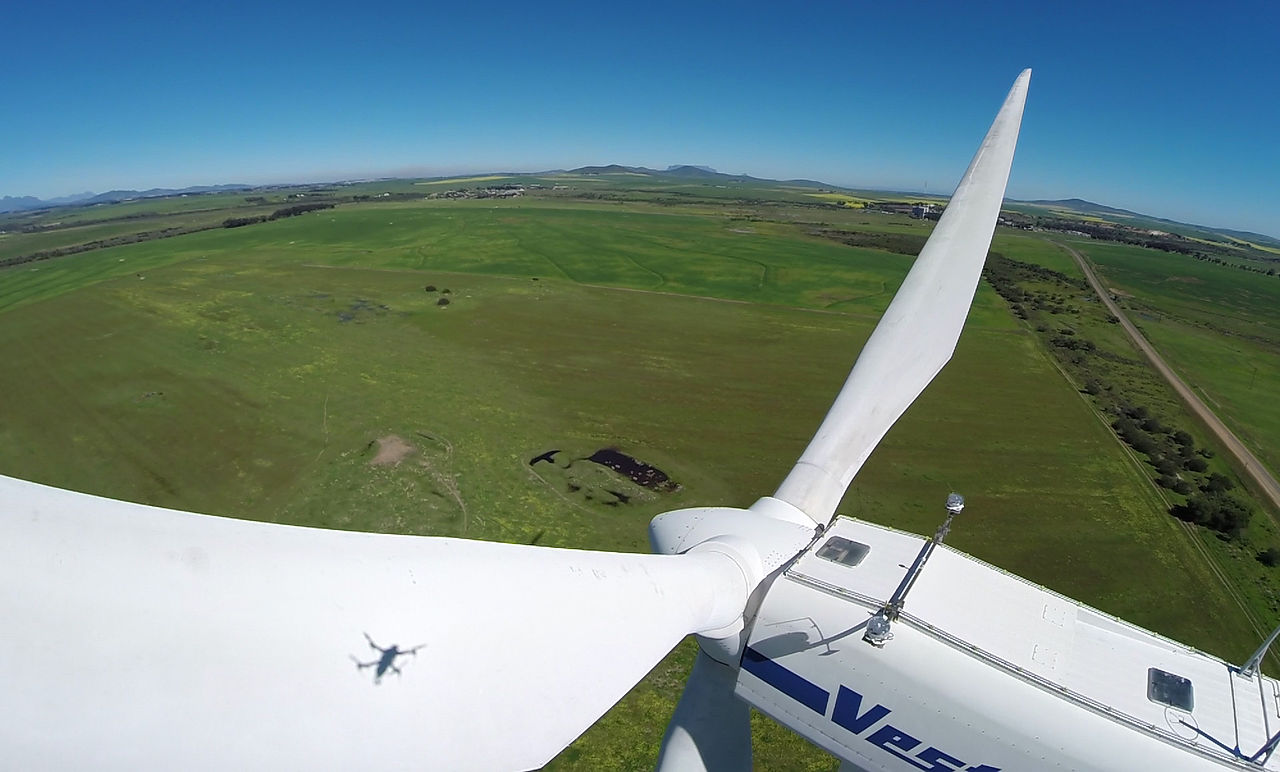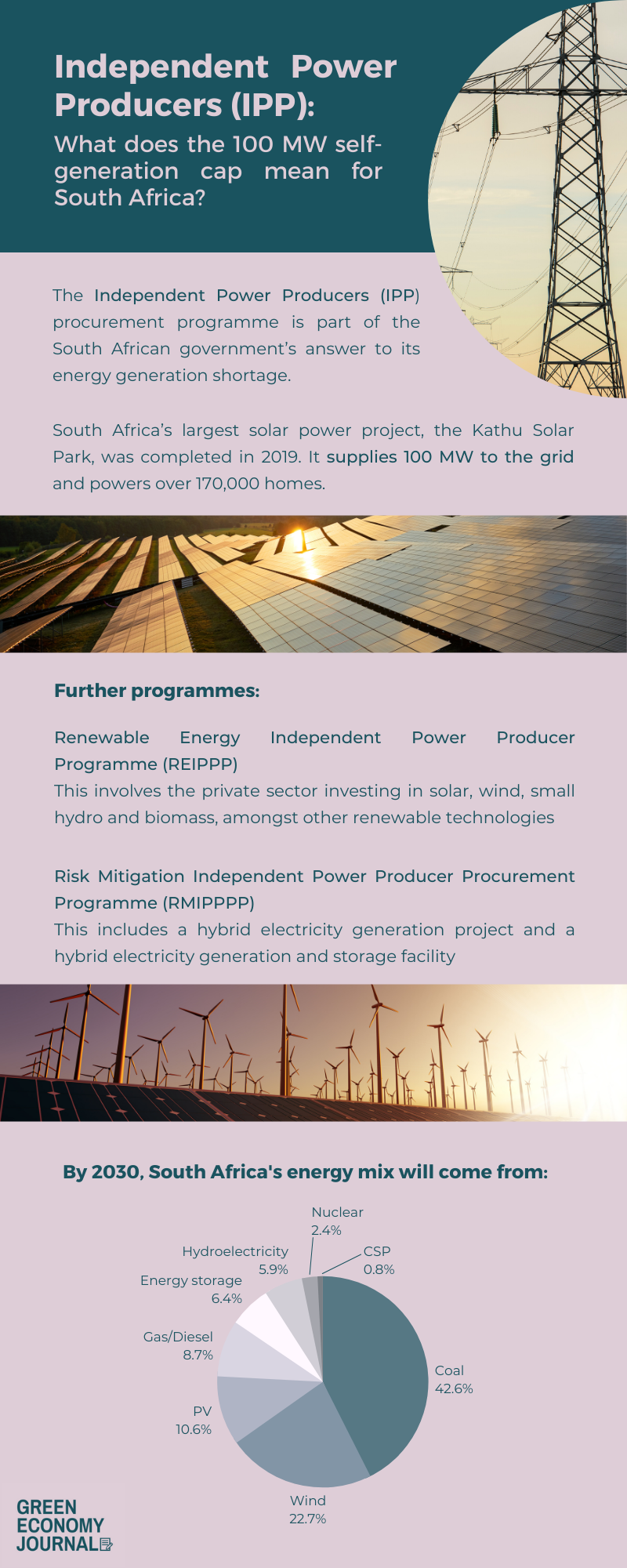The Independent Power Producers (IPP) solving South Africa’s energy crisis
The Independent Power Producers (IPP) procurement programme is part of the South African government’s answer to its energy generation shortage. The country needs to add an extra 39,696 megawatts (MW) to its national grid between 2019 and 2030. This is according to its most recent energy plan, published in October 2019.
The country suffers from regular power outages, known as load shedding, partly due to the age of its coal-powered fleet. This fleet, which provides the majority of South Africa’s electricity, is slowly being decommissioned. Eskom must remove 10.5 gigawatts (GW) of coal-powered electricity from the grid by 2030 and 35 GW from the grid by 2050.
To address this, the government brought in IPPs from the private sector to provide some of this new electricity. This includes renewable energy and new non-renewables, like coal. IPPs bid competitively for the contracts to provide this power.
In June 2021, the government announced new rules, allowing private generators of electricity, like IPPs, to generate up to 100 megawatts (MW) of power without needing a license from the regulator. This could result in the addition of 15,000 MW of electricity added to the national grid in the next five to seven years.
Renewables and the IPPs
The South African government spun off the renewable energy component of the IPP programme into a separate one altogether: the Renewable Energy Independent Power Producer Programme (REIPPP). The REIPPP involves the private sector investing in solar, wind, small hydro and biomass, amongst other renewable technologies.
The programme is internationally renowned, and these IPPs have created thousands of jobs. International observers have applauded the government and private sector for the scale and efficiency of the project. Other countries, like Chile and the United Arab Emirates, have studied the REIPPP project in South Africa with the idea to emulate it.

Renewables are important for South Africa’s grid
South Africa’s total energy generation capacity is over 58,000 MW. Of this, 80 per cent comes from coal. The South African government is set to change this considerably by 2030, and renewables will play a much bigger role.
By 2030, the energy mix will come from:
- 42.6 per cent coal
- 22.7 per cent wind
- 10.6 per cent solar photovoltaic (PV)
- 8.7 per cent gas or diesel
- 6.4 per cent energy storage
- 5.9 per cent hydroelectricity
- 2.4 per cent nuclear
- 0.8 per cent concentrated solar power (CSP)
The risk mitigation programme
In addition to the IPP and REIPPP programmes, the government introduced the Risk Mitigation Independent Power Producer Procurement Programme in late 2019. This was because the country urgently needed to procure 2,000 MW to plug a power shortage in the system.
The winning bidders included a hybrid electricity generation project (combining solar, wind and lithium batteries to produce electricity) and a hybrid electricity generation and storage facility. But, the bulk of the emergency power supply – three contracts – will come from a majority-Turkish owned company, Karpowership SA. This company will provide liquified natural gas-powered electricity to the country from large floating vessels, moored off of three of South Africa’s ports. The three contracts total R220 billion.
But, analysts are concerned about the 20-year-long contracts, which far exceed what could be considered an emergency intervention. Karpowership SA was granted regulatory approval by the country’s electricity regulator. But, it was denied environmental approval by the country’s environment department due to pollution concerns. Karpowership SA is challenging the environmental approval denial. One of the losing bidders is challenging the entire contract in court over corruption allegations.
Recent IPP projects
As of October 2021, the government has held five rounds of bidding for IPP projects. The Department of Energy announced the winning bidders for round five on October 28, 2021. These IPPs will build 13 solar PV farms and 12 onshore wind farms, at a total of 2,583 MW. These projects need to be up and running in no less than two years.
South Africa’s largest IPP projects
The first large IPP project came online in 2015. The 335 MW open cycle gas turbine plant is a peaking one, meaning that it operates for four hours per day during “peak” hours when electricity demand is at its highest. It runs on diesel, and Eskom can convert it to a gas plant.
South Africa’s largest solar power project, the Kathu Solar Park, was completed in 2019. It supplies 100 MW to the grid and powers over 170,000 homes.
The scale of the projects is impressive. For example, the size of photovoltaic solar panel farms is enormous, equivalent to 400 football fields. There are 25 projects at that scale. Analysts say that these IPP projects have not received the recognition they deserve, partly because of their remote locations.
In the case of the Redstone CSP plant, the central tower will reach 250 metres in height once completed. In fact, it will dwarf the country’s tallest building by several metres.

Self-generating power in South Africa
Until recently, self-generation of electricity in South Africa was an onerous process. This is because, until June 2021, anyone wanting to generate electricity of 1 MW or more outside of the Eskom grid needed a license to do so. But, President Cyril Ramaphosa removed this hurdle, opening up the possibility for more electricity producers to provide electricity for themselves or customers. As a result, embedded generation projects of up to 100 MW are exempt from having to apply for licenses to operate.
This also applies to IPPs, according to the lawfirm Bowmans. In other words, any person or business wanting to provide electricity to a customer can do so, provided that the electricity generation capacity of the facility is not more than 100 MW.
Benefits of an IPP
The change will have significant benefits for industry. Large electricity users, like industrial firms and miners, can now buy electricity directly from an IPP, and that power will then be transferred through the Eskom grid. This allows these businesses to sign power purchase agreements directly with IPPs, ensuring price certainty over the long term.
However, this does not apply to IPPs or other generators that want to sell electricity to Eskom. As a result, they will still need a license and power purchasing agreements with Eskom.

Related Articles
Tackling climate change and health together: South Africa’s new scorecard
South Africa’s heavy coal dependence is driving a climate and health crisis — tackling both together will reap huge benefits for people and the economy.
July will be the hottest month in recorded history
“The era of global boiling has arrived”, said UN chief António Guterres, and leaders must take drastic and immediate action to limit climate catastrophe.




